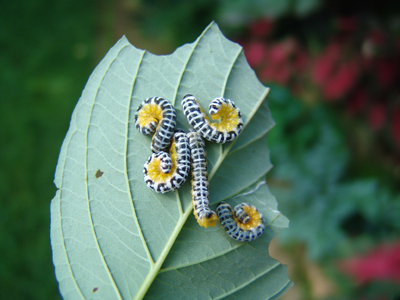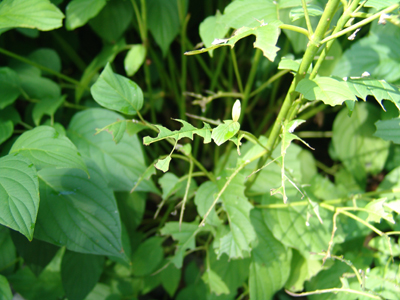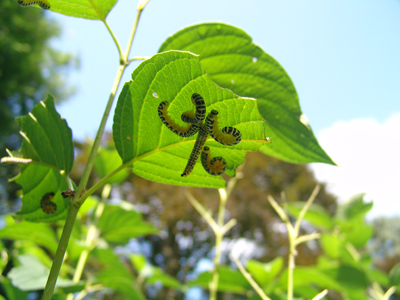
Dogwood sawfly, Macremphytus tarsatus, has been found on shrubby dogwood species on campus. While this pest looks like a caterpillar, it is actually the larval stage of a wasp-like Hymenoptera species.
Adult sawflies emerge in late spring and lay their eggs on the undersides of leaves. When the eggs hatch in mid-summer, the first stage larvae are tiny, yellow, and translucent. As they grow and molt, they become covered with a white waxy coating. They usually spend the daylight hours curled up and clinging to the underside of leaves. They can be quite gregarious, with a dozen or more congregating on one leaf. In large numbers, they can cause considerable defoliation and while unsightly, it usually will not harm the plant because it is late in the season. After the last molt, they usually stop feeding and seek a protected spot to overwinter. In early spring, they will pupate and later emerge as adults.

Leaf damage on shrubby dogwood. photo credit: W. Costello
The best control method is to handpick and drop them into a container of soapy water. You can also squash them under foot if you are so inclined (messy but effective.)
Occasionally, wasps or hornets will attack the larvae, which is fascinating to watch. They usually chew the sawfly in half and fly them back to their nest.

Dogwood sawfly on the underside of the leaf. photo credit: W. Costello
When the sawfly is detected early, insecticidal soap or horticultural oil is an effective control. In large plantings, chemical controls may be required. When the sawflies are larger, one of the contact or systemic insecticides registered for control may be needed.
